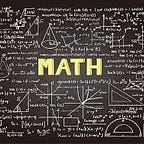Mathematics
Squaring Prime Pattern
Here are the prime numbers up to 151:
These are the numbers from 1 to 151 that are only divisible by 1 and themselves. On looking at these numbers superficially, we find no peculiar patterns between them. While looking at these, we won’t instantly search for patterns and we won’t find it easily as well. But guess what? There are several patterns among the prime numbers that were found by different mathematicians. In this paper, we will specifically be talking about the squaring primes pattern and proving it as well.
Consider the prime number p. Now, relying on this squaring prime pattern, we have, i.e., the square of any prime number minus one is the multiple of 24. And this pattern can be applied to all prime numbers, exclusive of 2 and 3, which can be considered sub-primes. For instance, let us take any two prime numbers, 19 and 73. Then,
192–1 = 360
= 24 * 15
732–1 = 5328
= 24 * 222
Here, we can see the pattern followed by these numbers.
Basically, this pattern is derived from another simple pattern which includes multiples of 6, which says that the prime numbers lie above or below the multiples of 6.
From the above table, we can clearly see that the numbers on either side or even both sides of the multiples of 6 are primes. We can find that numbers one less or one more than a multiple of 6 are prime for smaller numbers, and this applies to either of the numbers as the number increases.
Let’s take the numbers 10 and 20.
10, 11, 12, 13, 14, 15, 16, 17, 18, 19, 20
It’s not magic that the primes are only on either side of multiples of 6, but those are the only possible places they can be. Between 12 and 18, they can’t be at the even points because primes cannot be even. And the number at the center of multiples of 6 is a multiple of 3. Thus, primes can only be above or below a multiple of 6. Now let’s move on to proving the squaring primes pattern. Consider a prime number p, which can be represented as:
p = 6k + 1
p = 6k –1
where k is an integer that can be either even (2m) or odd (2m + 1).
Now the primes can be represented as:
1. p = 6(2m) + 1 = 12m + 1.
2. p = 6(2m + 1) + 1 = 12m + 7.
3. p = 6(2m) — 1 = 12m — 1.
4. p = 6(2m + 1) — 1 = 12m + 5.
Let us square the primes. Then we have:
1. p² = 144m² + 24m + 1 = 24(6m² + m) + 1 = 24 * k1 + 1
2. p² = 144m² + 168m + 49 = 24(6m² + 7m + 2) + 1 = 24 * k2 + 1
3. p² = 144m²–24m + 1 = 24(6m² — m) + 1 =24 * k3 + 1
4. p² = 144m² + 120m + 25 = 24(6m² + 5m + 1) + 1 = 24 * k4+ 1
From the above observations, we can conclude that p2–1 is a multiple of 24.
This pattern can also be proved in a better way, which is described below:
p²–1 = (p — 1)(p + 1)
On representing the numbers p — 1, p and p + 1 on a number line, we can say that p — 1 and p + 1 are even as p cannot be even, which implies that one of them is a multiple of 2 and the other is a multiple of 4.
· Therefore, (p — 1)(p + 1) is a multiple of 8.
Also, on a set of three consecutive numbers, one of them must be a multiple of 3. But p cannot be a multiple of 3, which implies either (p — 1) or (p + 1) is a multiple of 3.
· Therefore, (p — 1)(p + 1) is a multiple of 3. From the above points, we can say (p — 1) (p + 1) is definitely a multiple of 24.
Now, we know that every prime, excluding 2 and 3, could be represented in a pattern as the square of the prime is one less than a multiple of 24. This is the Squaring Prime Pattern.
Thank you for reading. Please don’t forget to clap the story if you find it insightful.
